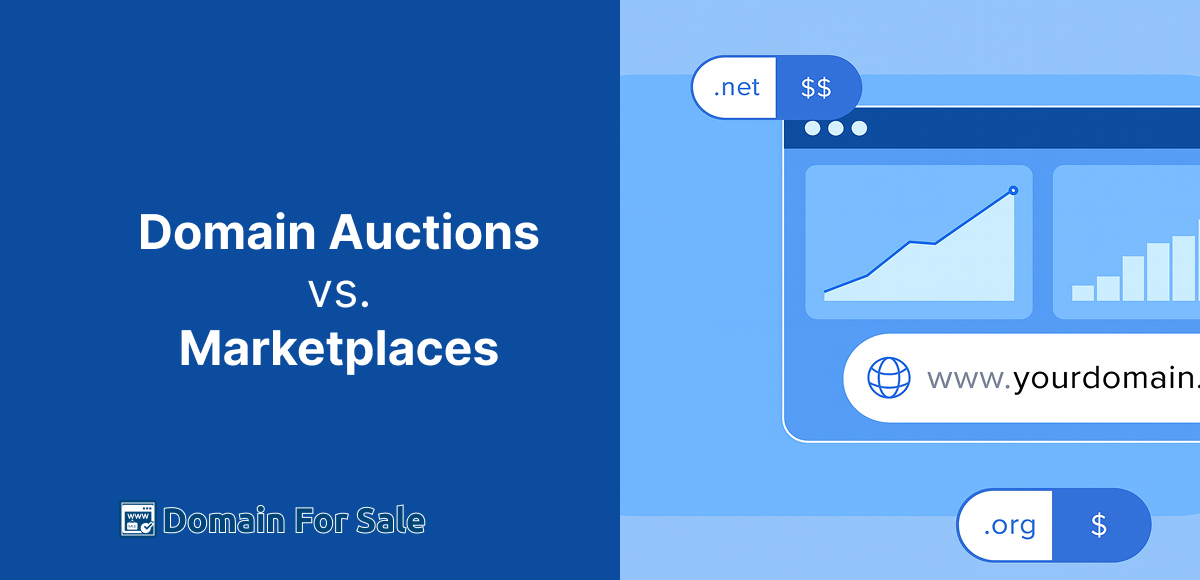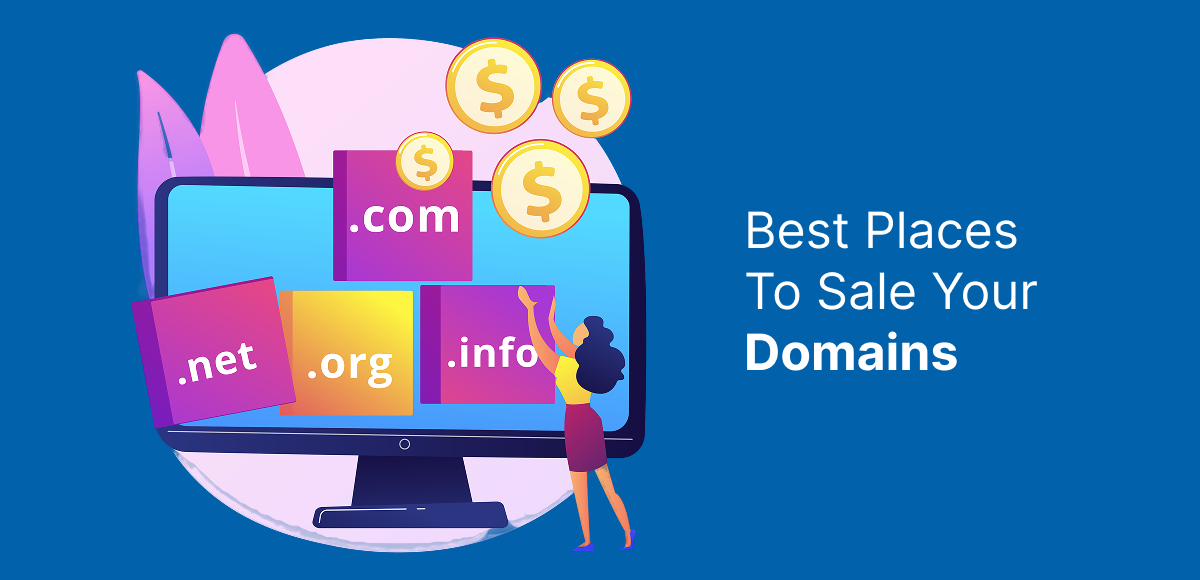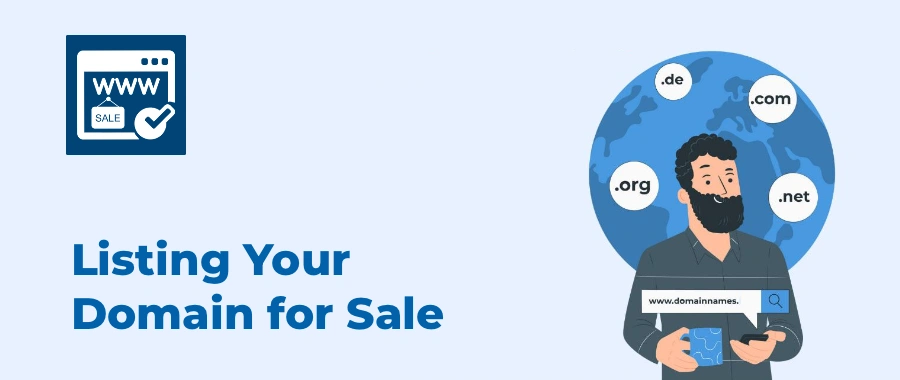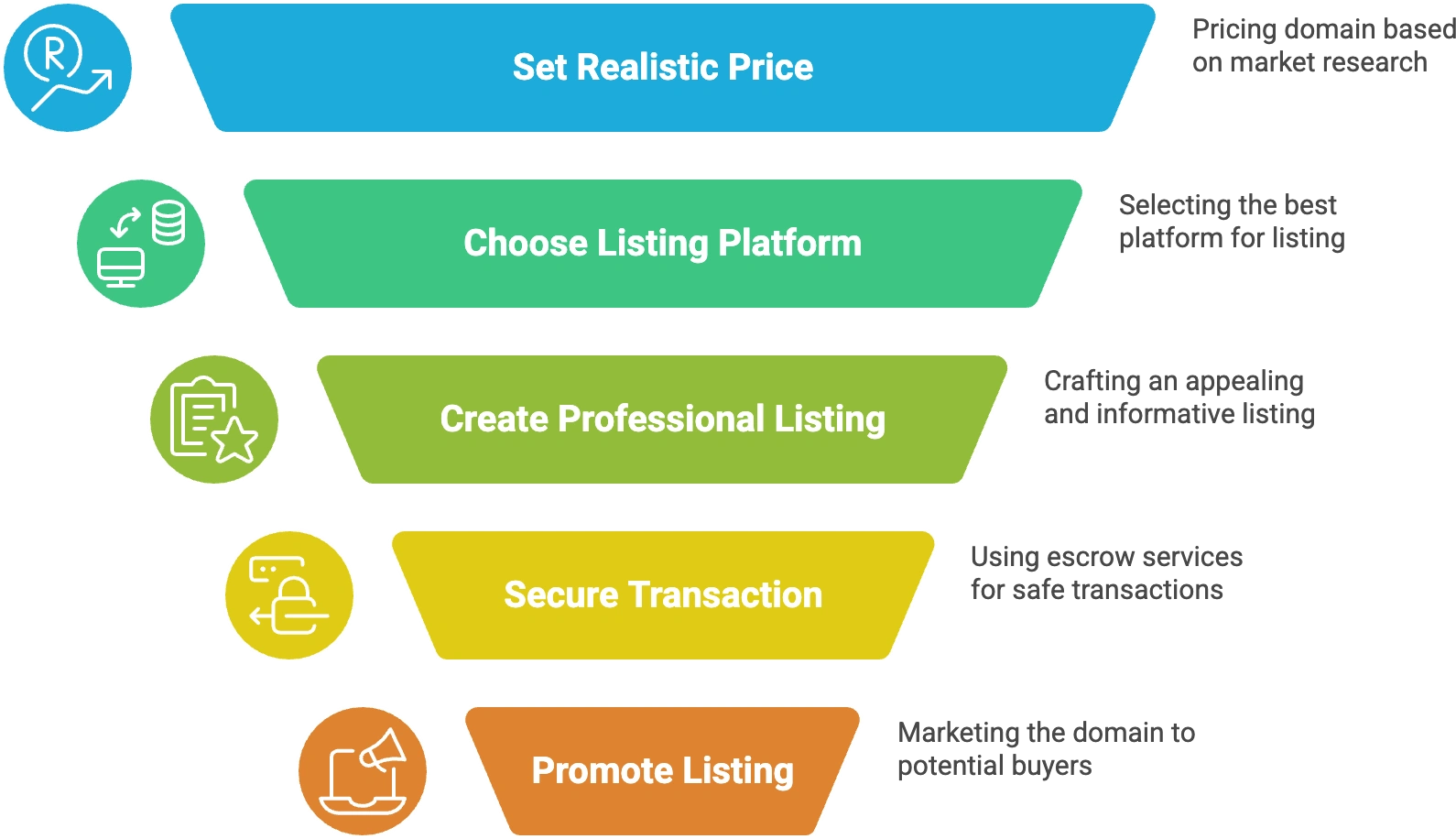Domain auctions vs marketplaces—it’s a choice every serious domain buyer eventually faces. Buying a domain isn’t one-size-fits-all, and the path you choose can shape both the price you pay and the quality of the name you secure.
On one side, you have Domain Auctions, where names are sold to the highest bidder. It’s fast, competitive, and sometimes thrilling—like a digital version of Sotheby’s for web addresses.
On the other side are Domain Marketplaces, where sellers list their domains at fixed prices (with room for negotiation). It’s a calmer, more predictable buying experience that emphasizes convenience and transparency.
So, which option should you choose? In this guide, we’ll break down the 5 key differences between auctions and marketplaces to help buyers make smarter, more profitable decisions.
Let’s compare auctions vs. marketplaces head-to-head.
Table of Contents
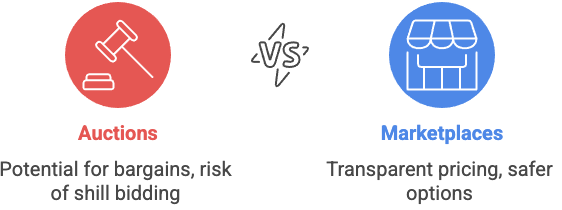
Difference #1: Buying Process
When it comes to domain auctions vs. marketplaces, the buying process is the first—and perhaps most obvious—difference.
- Auctions: These operate on a competitive bidding model with a clear start and end date. Buyers place bids, prices climb, and at the deadline, the highest bidder wins. It’s fast-paced and requires quick decision-making, often rewarding those who are decisive and strategic.
- Marketplaces: Here, domains are listed much like products in an online store. You can browse freely, compare options, and either pay the fixed price or open negotiations with the seller. There’s no ticking clock, which gives buyers more time to consider their investment.
👉 Which is better for buyers?
It depends on your style. If you thrive on urgency and the thrill of competition, auctions might suit you. But if you value patience, careful research, and predictable transactions, marketplaces are the safer bet.
Difference #2: Pricing & Value
Price is where domain auctions vs marketplaces really diverge, and for buyers, it’s often the deciding factor.
- Auctions: The biggest draw is the chance to snag a bargain. If competition is low, you might walk away with a premium domain at a fraction of its true value. But there’s a flip side—when multiple bidders lock in, prices can escalate fast, sometimes even beyond market value. It’s high risk, high reward.
- Marketplaces: Pricing here is far more transparent. Sellers typically set fixed prices, sometimes with room for negotiation. While this means you’re less likely to stumble onto a “steal,” it also reduces the risk of overspending in the heat of a bidding war.
👉 Buyer takeaway: Auctions are best if you’re willing to gamble for a deal, while marketplaces offer stability and predictability.
Difference #3: Domain Quality & Availability
Another big factor in the domain auctions vs marketplaces debate is the quality and availability of names you’ll find.
- Auctions: These are often the hunting grounds for expired, premium, or rare domains. When a valuable name lapses or an owner decides to sell through a bidding process, it shows up in auction catalogs. For buyers, this can mean access to domains that might never appear in a standard marketplace.
- Marketplaces: Here, the inventory is broad and always available. You’ll find everything from brandable new names to aged domains. However, the truly premium names are usually priced high, reflecting their perceived market value.
👉 Buyer takeaway: Auctions feel like treasure hunts—you might uncover a rare gem at a great price. Marketplaces, on the other hand, function more like storefronts: everything is laid out clearly, but the best items come with premium price tags.
Difference #4: Transparency & Risk
Transparency is another area where domain auctions vs marketplaces differ in a big way.
- Auctions: While exciting, auctions come with risks. There’s the possibility of shill bidding (fake bids to drive up prices), unpredictable competition, and the uncertainty of whether you’ll actually win. For newcomers, this can feel overwhelming and even risky.
- Marketplaces: In contrast, marketplaces usually offer clear ownership transfer processes with built-in buyer protections. You know exactly what you’re paying and what you’re getting. The trade-off? Safer transactions often come at slightly higher prices.
👉 Buyer takeaway: In the domain auctions vs marketplaces comparison, marketplaces are generally the safer choice for beginners, while auctions are better suited for experienced buyers comfortable with risk.
Difference #5: Payment & Security
Payment and security can be the deciding factor when weighing domain auctions vs marketplaces.
- Auctions: Platforms like GoDaddy Auctions or NameJet are generally secure, but they come with strict rules. Once you win, you’re expected to pay within a short window—often just a few days. Miss that deadline, and you could lose the domain and face penalties.
- Marketplaces: These platforms tend to provide more flexibility. Many offer escrow services, buyer protection, and even installment payment options. This makes marketplaces especially appealing to buyers who want added security and time to complete the transaction.
👉 Buyer takeaway: In the domain auctions vs marketplaces debate, marketplaces usually give buyers more flexible and secure payment options, while auctions require speed and decisiveness.
When to Choose Auctions vs. Marketplaces
After comparing domain auctions vs marketplaces, the right choice comes down to your goals, risk tolerance, and buying style.
✅ Auctions are better if:
- You’re chasing rare, premium, or expired domains that may only surface through bidding.
- You can move fast, handle the pressure of competition, and don’t mind a little unpredictability.
- You’re willing to take risks for the chance of landing a bargain.
✅ Marketplaces are better if:
- You want safety, convenience, and transparent pricing without the stress of auctions.
- You’re building a domain portfolio and prefer stable, predictable transactions.
- You value flexible payment options, buyer protection, and clear ownership transfers.
👉 Bottom line: Auctions are like adrenaline-fueled treasure hunts, while marketplaces are like steady storefronts. In the domain auctions vs marketplaces decision, choose the path that matches your buying style and business needs.
FAQs – Domain Auctions vs Marketplaces
-
Are domain auctions cheaper than marketplaces?
Sometimes, yes. Domain auctions can lead to great bargains if there isn’t much competition. But if bidding heats up, prices can actually exceed what you’d pay in a marketplace. That’s why comparing domain auctions vs marketplaces is essential before deciding where to buy.
-
Which is safer for beginners—auctions or marketplaces?
Marketplaces are generally safer for beginners. They offer transparent pricing, clear ownership transfers, and buyer protections. Auctions can feel overwhelming if you’re new, with risks like shill bidding and tight payment windows.
-
Can I negotiate in domain auctions?
Not directly. Auctions follow strict rules—highest bidder wins. Marketplaces, however, often allow negotiation with sellers. If you want flexibility in price discussions, marketplaces are the better choice.
-
Do marketplaces also list expired domains?
Yes, but not as frequently. Expired and rare domains are more likely to appear at auctions. Marketplaces usually showcase active listings from sellers, though some expired names do get reposted there.
-
Should I use escrow for both auctions and marketplaces?
Absolutely. Escrow protects both buyer and seller, ensuring payment is only released once the domain is securely transferred. Whether you’re using auctions or marketplaces, escrow adds an extra layer of trust.
Conclusion
When weighing domain auctions vs marketplaces, the truth is there’s no one-size-fits-all answer. Both options come with unique advantages and drawbacks. Auctions deliver the thrill of the hunt—perfect for buyers chasing rare or expired names and willing to embrace competition. Marketplaces, on the other hand, offer peace of mind, giving buyers a safe, predictable environment with transparent pricing and secure transfers.
Ultimately, the best choice depends on your buying style: are you an adrenaline-fueled treasure hunter, or do you prefer the steady confidence of a storefront?
Showcase Your Domains the Right Way
Ready to put your own domains in front of serious buyers? The Domain For Sale plugin makes it easy to create professional listings directly from your WordPress site—no coding required.
